Removing wax from unfinished wood may seem daunting, but it can be done easily and effectively with the right techniques. Wax can leave unsightly stains and buildup on your wooden surfaces, making them look dull and dirty. Whether you accidentally spilled wax on your bare wood furniture or are looking to remove old layers of wax buildup, there are several methods you can use to successfully remove wax without damaging the wood.
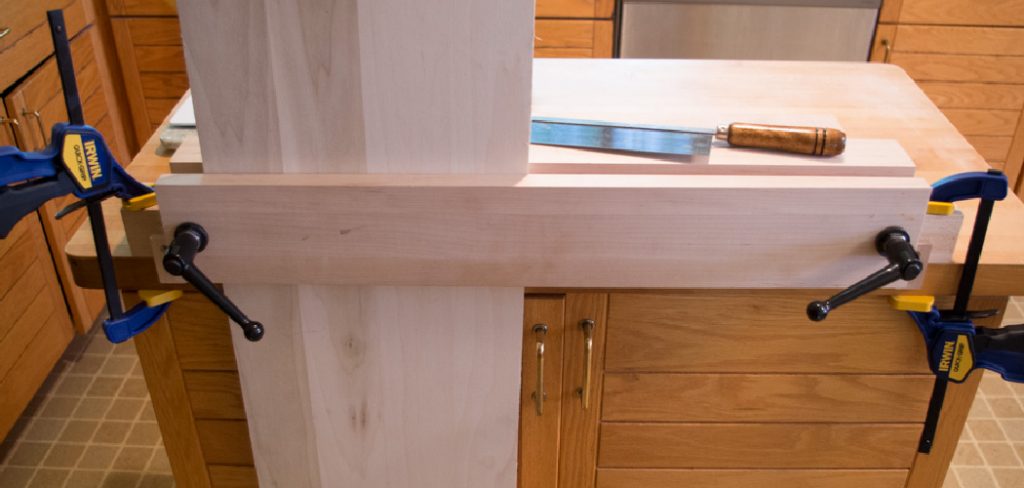
This guide will discuss different methods and tips for how to remove wax from unfinished wood. If you have finished wood, it is important to note that these methods may not be suitable as they may damage the protective finish on your wood.
Understanding Wax Buildup on Unfinished Wood
Before we dive into the methods of removing wax from unfinished wood, it is important to understand why and how wax buildup occurs. Wax is commonly used on unfinished wood as a protective coating to enhance its natural beauty.
Over time, however, multiple layers of wax can build up and cause a dull, hazy appearance on the wood’s surface. Additionally, dust and dirt can get trapped in the wax, making cleaning difficult and giving the wood an unappealing appearance. This is why it is important to regularly remove old layers of wax buildup from unfinished wood.
Supplies You Will Need to Remove Wax From Unfinished Wood
- Soft cloths or rags
- Plastic scraper or credit card
- White vinegar
- Mineral spirits
- Steel wool or sandpaper
- Protective gloves
11 Best Methods on How to Remove Wax From Unfinished Wood
1. Scrape Off Excess Wax:
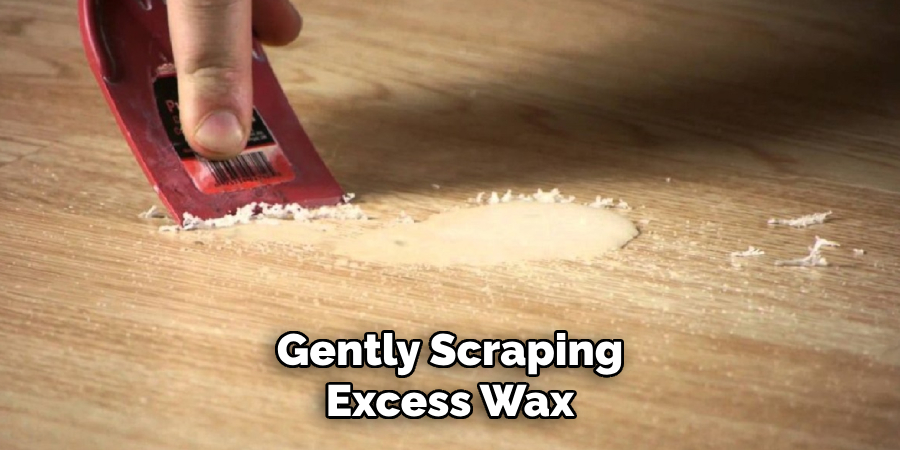
The first step in removing wax from unfinished wood is gently scraping excess wax using a plastic scraper or credit card. Be careful not to damage the surface of the wood while scraping. This method is best for fresh wax spills or small areas of buildup. If the wax has hardened, you can use a hair dryer to soften it before scraping. Make sure to wipe away any loosened wax with a soft cloth.
2. Use White Vinegar:
White vinegar is an excellent natural cleaner that can be used to dissolve wax buildup on unfinished wood. Mix equal parts of white vinegar and water, and apply the solution onto the affected area with a clean cloth. Let it sit for a few minutes, then gently scrub the area with a soft brush or steel wool. Wipe away the residue with a damp cloth and repeat if necessary. Using vinegar also helps to sanitize and deodorize the wood.
3. Try Mineral Spirits:
Mineral spirits, also known as paint thinner, can effectively dissolve wax buildup on unfinished wood. Apply a small amount of mineral spirits onto a clean cloth and wipe the affected area in a circular motion. Be careful not to scrub too hard, as it may damage the wood’s surface. Once the wax is dissolved, wipe away any residue with a damp cloth and let it air dry. This method is ideal for thick layers of wax buildup.
4. Use Steel Wool or Sandpaper:
For stubborn areas of wax buildup, you can use steel wool or sandpaper to gently scrub the wax. Make sure to use fine-grit steel wool or sandpaper to avoid damaging the wood’s surface. After scrubbing, wipe away any residue with a damp cloth and let it dry completely. Using this method may require refinishing the wood afterward. If you are unsure, testing this method on a small, inconspicuous area is always best.
5. Apply Heat:
Heat can help soften hardened wax and make it easier to remove from unfinished wood. You can use a hairdryer or a warm iron (covered with a cloth) to apply heat to the affected area. Once the wax is softened, gently scrape it off with a plastic scraper or credit card. Wipe away any residue with a clean cloth. While effective, this method should be used cautiously to avoid damaging the wood.
6. Use a Steam Cleaner:
Another way to remove wax from unfinished wood is by using a steam cleaner. The high steam temperature can help melt and loosen the wax, making it easier to wipe away. This method is best for large areas of wax buildup or heavily soiled surfaces. Make sure to follow the manufacturer’s instructions and precautions when using a steam cleaner on unfinished wood.
7. Try Baking Soda:
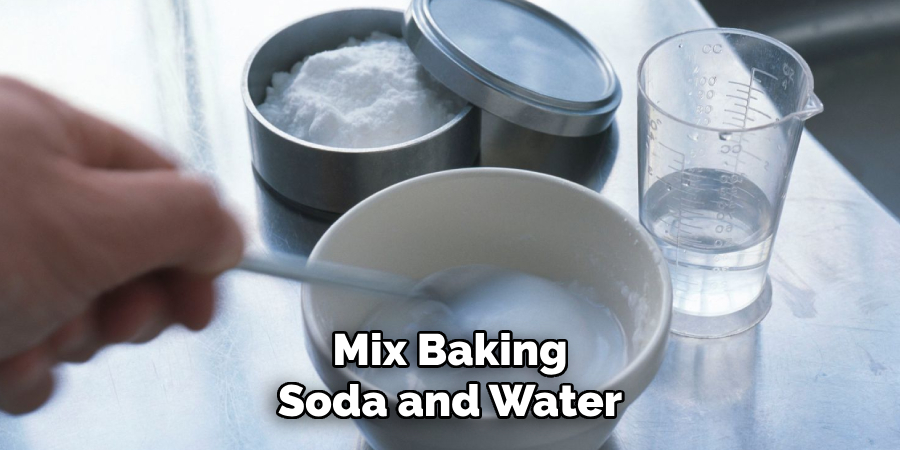
Baking soda is another natural cleaning agent that can help remove wax buildup from unfinished wood. Mix baking soda and water, then apply a paste to the affected area with a cloth or soft brush. Gently scrub in a circular motion, then wipe away the residue with a damp cloth. Baking soda also helps to deodorize and sanitize the wood.
8. Use Citrus Solvent:
Citrus solvent is an eco-friendly cleaning agent that effectively removes wax from unfinished wood. Apply it onto the affected area and let it sit for a few minutes before scrubbing with a soft brush or cloth. Wipe away any loosened wax with a damp cloth and let it air dry. The citrus solvent also leaves a pleasant citrus scent on the wood.
9. Apply Furniture Polish:
Using furniture polish can help remove old layers of wax buildup from unfinished wood. Apply a generous amount of furniture polish onto the affected area and let it sit for a few minutes. Gently scrub with a soft brush or cloth, then wipe away the residue with a damp cloth. Repeat if necessary. Make sure to use a furniture polish that is safe for unfinished wood.
10. Try Ammonia:
Ammonia can be used to remove wax buildup from unfinished wood, but it should be used with caution. Mix equal parts of ammonia and water, and apply the solution to the affected area with a cloth or soft brush. Gently scrub in a circular motion, then wipe away the loosened wax with a damp cloth. Make sure to wear protective gloves and work in a well-ventilated area when using ammonia.
11. Seek Professional Help:
If you are unsure about removing wax from unfinished wood yourself or if the buildup is extensive, it’s best to seek professional help. Furniture restoration experts have the necessary tools and expertise to safely and effectively remove wax buildup without causing damage to the wood. They can also advise on proper care and maintenance for your unfinished wood furniture.
Following these methods can help you effectively remove wax buildup from unfinished wood and restore its natural beauty. Regularly cleaning and maintaining your unfinished wood furniture will keep it looking great and prolong its lifespan.
Remember to always test any method on a small, inconspicuous area first to avoid damaging the wood. With proper care, your unfinished wood furniture can last for generations to come. Happy cleaning!
Additional Tips and Tricks to Remove Wax From Unfinished Wood
1. If the wax has hardened and becomes difficult to remove, use a hairdryer on a low heat setting to soften it. This will make it easier to scrape off with a plastic spatula or credit card. If using a hairdryer, be sure to keep it at least 6 inches away from the wood surface to avoid damaging the wood.
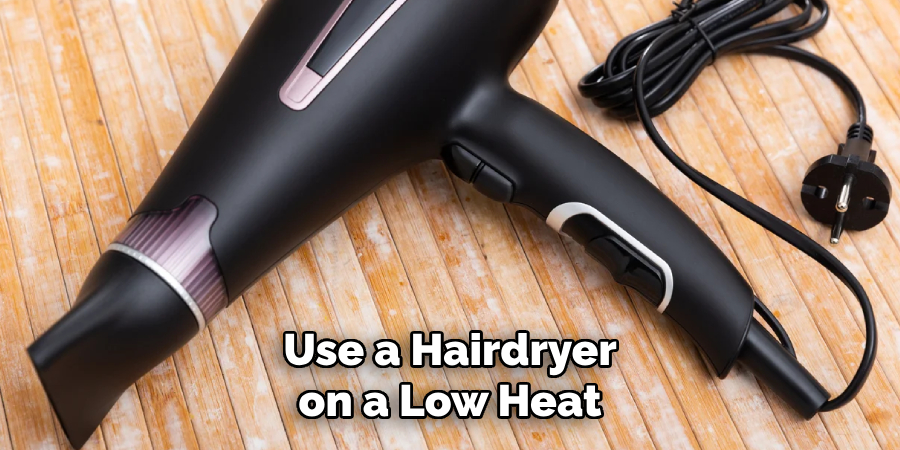
2. Another effective method for removing wax is to use a mixture of equal parts white vinegar and water. Apply the solution to the wax with a soft cloth and let it sit for a few minutes before wiping it off. This will help break down and loosen the wax for easier removal.
3. For tougher stains, you can try using mineral spirits or rubbing alcohol. Apply a small amount onto a soft cloth and gently rub it onto the affected area. Be sure to test this method on a small, inconspicuous area first to avoid any potential damage to the wood.
4. If you have access to a steam cleaner, this can also be an effective way to remove wax from unfinished wood. Steam the affected area for a few minutes and then wipe it off with a clean cloth.
5. To prevent future wax buildup on your unfinished wood surfaces, consider using coasters or placemats under candles and other objects that may leave behind wax residue.
6. Regularly dust and clean your unfinished wood surfaces with a soft, dry cloth to remove any accumulated debris or wax residue.
7. Wax can also be removed with a commercial wax remover designed for unfinished wood. Be sure to follow the instructions carefully and test the product on a small area before applying it to the entire surface.
8. Sometimes, you may need to lightly sand the affected area with fine sandpaper to completely remove the wax. Be sure to use a gentle touch and only sand in the direction of the wood grain.
9. Once you have successfully removed the wax, consider applying a protective finish or sealant to your unfinished wood surfaces to prevent future staining or damage.
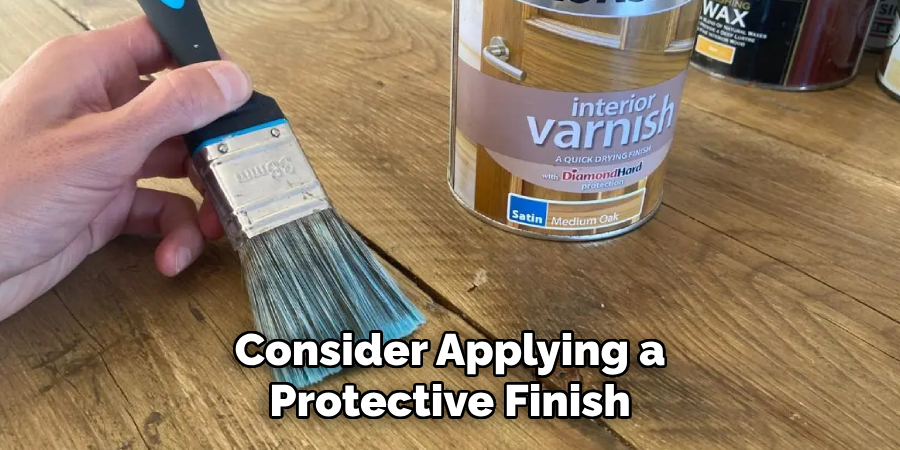
10. If all else fails, it may be best to seek professional help to safely and effectively remove wax from your unfinished wood surfaces. Always use caution and test any methods on a small, inconspicuous area before applying them to the entire surface.
Following these tips and tricks can help you effectively remove wax from your unfinished wood surfaces without causing any damage. Remember to always be gentle and cautious when cleaning and regularly maintain your unfinished wood surfaces to prevent future wax buildup or other debris.
With proper care, your unfinished wood furniture or flooring will maintain its natural beauty for years to come. Happy cleaning!
Things You Should Consider to Remove Wax From Unfinished Wood
1. The first thing to consider is the type of wood you are dealing with. Different types of wood react differently to different wax removal methods, so it’s important to know what type of wood you are working with before attempting any removal techniques.
2. Another important factor to consider is the type of wax that has been spilled or applied to the unfinished wood. Some waxes are oil-based, while others are water-based, and each requires a different approach for removal.
3. Before attempting any wax removal methods, it’s always best to test them on a small, inconspicuous area first to see how the wood reacts. This will also help you determine the best method for removing the wax without damaging the wood.
4. The next thing to consider is the age and condition of the wood. Older, more fragile wood may require a gentler approach when it comes to wax removal, while newer or sturdier wood may be able to withstand more intensive methods.
5. It is important to remove as much of the wax as possible before trying any cleaning methods. Use a plastic scraper or credit card to gently scrape away excess wax, taking care not to scratch the wood.
6. Applying heat can help soften and loosen the wax for easier removal of oil-based waxes. You can use a hairdryer on low heat or a warm iron (with a cloth in between) to melt the wax and then blot it away with a clean cloth.
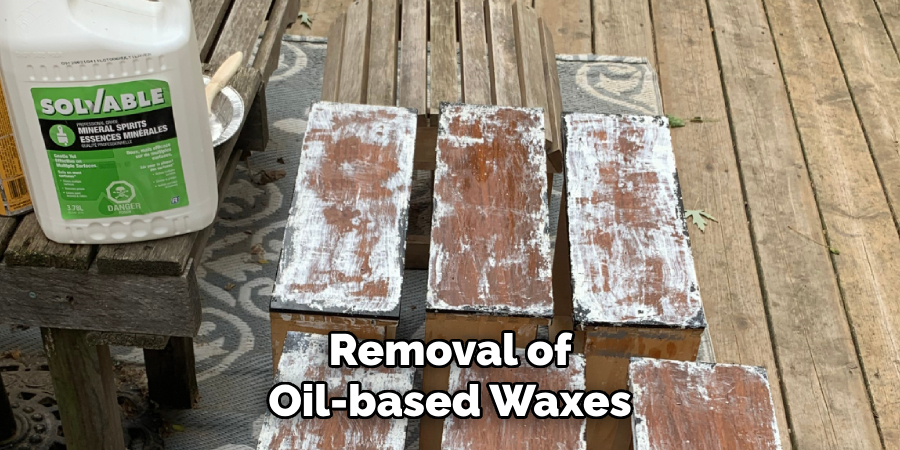
7. Water-based waxes can be removed with warm water and mild soap. Soak a clean cloth in the solution and gently scrub the affected area, carefully not to saturate the wood. Then, wipe away any remaining wax with a dry cloth.
8. You may need to use a solvent or chemical cleaner specifically designed for wood for more stubborn wax stains. Be sure to follow the instructions carefully and test on a small area first.
9. After removing the wax, cleaning and conditioning the wood is important to prevent any damage or drying out. Use a gentle wood cleaner and then apply a protective finish, such as mineral oil or beeswax.
Following these considerations and taking the necessary precautions can help you safely and effectively remove wax from unfinished wood without causing damage. Remember to always test any methods on a small area first, and if in doubt, seek professional help for more delicate or valuable pieces of wood furniture.
Keeping your unfinished wood clean and protected will ensure its longevity and beauty for years to come. Happy cleaning!
Frequently Asked Questions
What is the Best Method for Removing Wax From Unfinished Wood?
One of the most effective methods is to use a hairdryer and a clean cloth. Start by heating the wax with the hairdryer, then gently wipe it away with the cloth. You may need to repeat this process a few times to completely remove all of the wax.
Can I Use Chemical Cleaners to Remove Wax From Unfinished Wood?
Chemical cleaners are not recommended for use on unfinished wood, as they can potentially damage the surface. Stick to natural methods like heat or a solvent-based cleaner specifically designed for wood surfaces. If you choose to use a chemical cleaner, test it on a small, inconspicuous area first.
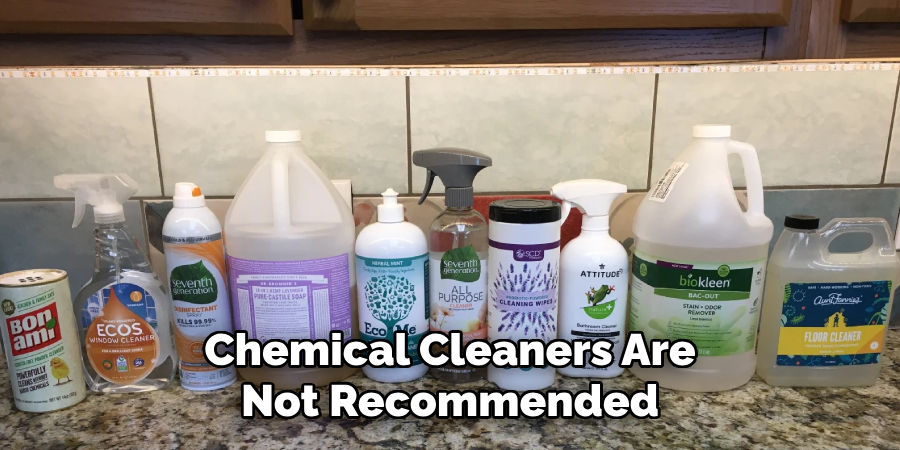
Are There Any Household Items That Can Help Remove Wax From Unfinished Wood?
Yes, several household items can help remove wax from unfinished wood. Some examples include white vinegar, rubbing alcohol, and baking soda. These items can be mixed with water to create a solution that helps dissolve the wax and make it easier to remove.
Is There a Specific Direction I Should Follow When Removing Wax From Unfinished Wood?
It is recommended to always go with the grain of the wood when removing wax. This will help prevent any damage or scratches to the surface. Also, use a soft cloth or brush to avoid scratching the wood.
How Do I Prevent Wax From Building Up on Unfinished Wood Surfaces?
Regularly dusting and cleaning your unfinished wood surfaces can help prevent wax build-up. Additionally, avoiding using too much wax during polishing or opting for natural oils can help prevent excessive build-up.
Always follow the instructions on any products used and test them on a small, inconspicuous area before applying them to the entire surface. If you notice any wax build-up, promptly remove it using one of the above-mentioned methods.
Can I Use Sandpaper to Remove Wax From Unfinished Wood?
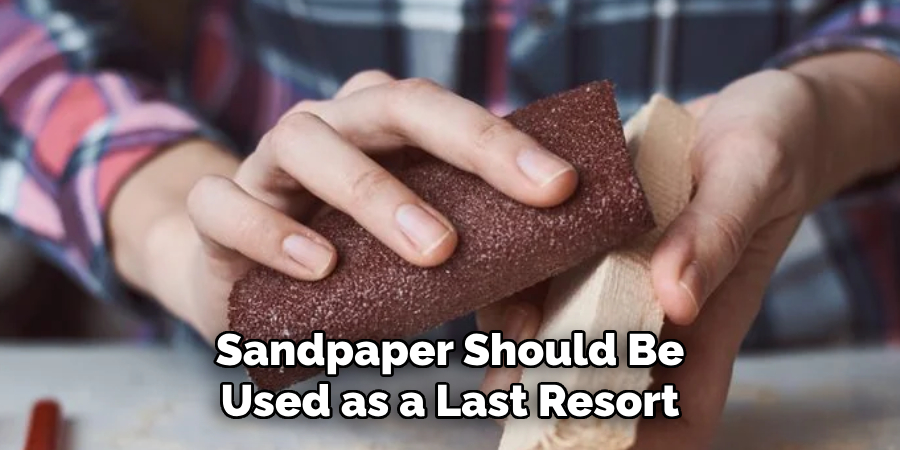
Sandpaper should be used as a last resort and only in extreme cases where other methods have not been successful. Sanding can damage the wood and should be done with caution. If you are unsure about using sandpaper on your unfinished wood surface, it is best to seek professional help.
Conclusion
All in all, knowing how to remove wax from unfinished wood can save you time and frustration. By using the right methods and tools, you can effectively remove wax without damaging the wood surface. Always test any products or methods on a small area before applying them to the entire surface, and be gentle when working with unfinished wood.
With regular maintenance and careful cleaning, you can keep your unfinished wood surfaces looking beautiful for years to come. So the next time you accidentally spill wax on your unfinished wood furniture, don’t panic – refer back to these tips, and you’ll easily remove it. Happy cleaning!
About the Author
Adrian Green, a lifelong woodworking enthusiast, shares his passion for the craft through The Woodenify Blog. With a foundation built on years of hands-on experience in his father’s woodworking shop, Adrian is dedicated to helping others learn and grow in the world of DIY woodworking. His approach to woodworking combines creativity, practicality, and a deep appreciation for the art of building with your own hands. Through his blog, he inspires individuals of all skill levels to embark on their own woodworking journeys, creating beautiful, functional pieces of furniture and décor.
Professional Focus
- Specializes in DIY woodworking projects, from furniture to home décor.
- Provides step-by-step guides and practical tutorials for woodworkers of all skill levels.
- Dedicated to helping readers build confidence and skill through easy-to-follow instructions and tips.
- Passionate about fostering a community of makers who can share, learn, and grow together.
Education History
- University of Craft and Design – Bachelor of Fine Arts (BFA) in Woodworking and Furniture Design
- Woodworking Apprenticeships – Extensive hands-on training with skilled craftsmen to refine carpentry and furniture making techniques.
- Online Courses & Masterclasses – Continued education in advanced woodworking techniques, design principles, and specialized tools
Expertise:
- DIY woodworking, carpentry, furniture making, and home décor projects.
- Creating accessible tutorials and guides for beginner to advanced woodworkers.
- Sharing the joys and satisfaction of woodworking, from raw materials to finished products.
